Ask Ethan: Could The Fabric Of Spacetime Be Defective?










Ask Ethan: Could The Fabric Of Spacetime Be Defective?
“The topic I’d like to suggest is high-energy relics, like domain walls, cosmic strings, monopoles, etc… it would be great to read more about what these defects really are, what their origin is, what properties they likely have, or, and this is probably the most exciting part for me, how we expect them to look like and interact with the ‘ordinary’ universe.”
So, you’d like to ruin the fabric of your space, would you? Similar to tying a knot in it, stitching it up with some poorly-run shenanigans, running a two-dimensional membrane through it (like a hole in a sponge), etc., it’s possible to put a topological defect in the fabric of space itself. This isn’t just a mathematical possibility, but a physical one: if you break a symmetry in just the right way, monopoles, strings, domain walls, or textures could be produced on a cosmic scale. These could show up in a variety of ways, from abundant new, massive particles to a network of large-scale structure defects in space to a particular set of fluctuations in the cosmic microwave background. Yet when it comes time to put up or shut up, the Universe offers no positive evidence of any of these defects. Save for one, that is: back in 1982, there was an observation of one (and only one) event consistent with a magnetic monopole. 35 years later, we still don’t know what it was.
It’s time to investigate the possibilities, no matter how outlandish they seem, on this week’s Ask Ethan!
More Posts from Evisno and Others






death of a star by a supernova explosion,
and the birth of a black hole




The latest from Brock Davis - love his work!
NASA logo. April 27, 2015 As the saying goes, timing is everything. More so in 21st-century space exploration where navigating spacecraft precisely to far-flung destinations—say to Mars or even more distant Europa, a moon of Jupiter—is critical. NASA is making great strides...

Cosmic horseshoe is not the lucky beacon
A UC Riverside-led team of astronomers use observations of a gravitationally lensed galaxy to measure the properties of the early universe
Although the universe started out with a bang it quickly evolved to a relatively cool, dark place. After a few hundred thousand years the lights came back on and scientists are still trying to figure out why.
Astronomers know that reionization made the universe transparent by allowing light from distant galaxies to travel almost freely through the cosmos to reach us.
However, astronomers don’t fully understand the escape rate of ionizing photons from early galaxies. That escape rate is a crucial, but still a poorly constrained value, meaning there are a wide range of upper and lower limits in the models developed by astronomers.
That limitation is in part due to the fact that astronomers have been limited to indirect methods of observation of ionizing photons, meaning they may only see a few pixels of the object and then make assumptions about unseen aspects. Direct detection, or directly observing an object such as a galaxy with a telescope, would provide a much better estimate of their escape rate.
In a just-published paper, a team of researchers, led by a University of California, Riverside graduate student, used a direct detection method and found the previously used constraints have been overestimated by five times.
“This finding opens questions on whether galaxies alone are responsible for the reionization of the universe or if faint dwarf galaxies beyond our current detection limits have higher escape fractions to explain radiation budget necessary for the reionization of the universe,” said Kaveh Vasei, the graduate student who is the lead author of the study.
It is difficult to understand the properties of the early universe in large part because this was more than 12 billion year ago. It is known that around 380,000 years after the Big Bang, electrons and protons bound together to form hydrogen atoms for the first time. They make up more than 90 percent of the atoms in the universe, and can very efficiently absorb high energy photons and become ionized.
However, there were very few sources to ionize these atoms in the early universe. One billion years after the Big Bang, the material between the galaxies was reionized and became more transparent. The main energy source of the reionization is widely believed to be massive stars formed within early galaxies. These stars had a short lifespan and were usually born in the midst of dense gas clouds, which made it very hard for ionizing photons to escape their host galaxies.
Previous studies suggested that about 20 percent of these ionizing photons need to escape the dense gas environment of their host galaxies to significantly contribute to the reionization of the material between galaxies.
Unfortunately, a direct detection of these ionizing photons is very challenging and previous efforts have not been very successful. Therefore, the mechanisms leading to their escape are poorly understood.
This has led many astrophysicists to use indirect methods to estimate the fraction of ionizing photons that escape the galaxies. In one popular method, the gas is assumed to have a “picket fence” distribution, where the space within galaxies is assumed to be composed of either regions of very little gas, which are transparent to ionizing light, or regions of dense gas, which are opaque. Researchers can determine the fraction of each of these regions by studying the light (spectra) emerging from the galaxies.
In this new UC Riverside-led study, astronomers directly measured the fraction of ionizing photons escaping from the Cosmic Horseshoe, a distant galaxy that is gravitationally lensed. Gravitational lensing is the deformation and amplification of a background object by the curving of space and time due to the mass of a foreground galaxy. The details of the galaxy in the background are therefore magnified, allowing researchers to study its light and physical properties more clearly.
Based on the picket fence model, an escape fraction of 40 percent for ionizing photons from the Horseshoe was expected. Therefore, the Horseshoe represented an ideal opportunity to get for the first time a clear, resolved image of leaking ionizing photons to help understand the mechanisms by which they escape their host galaxies.
The research team obtained a deep image of the Horseshoe with the Hubble Space Telescope in an ultraviolet filter, enabling them to directly detect escaping ionizing photons. Surprisingly, the image did not detect ionizing photons coming from the Horseshoe. This team constrained the fraction of escaping photons to be less than 8 percent, five times smaller than what had been inferred by indirect methods widely used by astronomers.
“The study concludes that the previously determined fraction of escaping ionizing radiation of galaxies, as estimated by the most popular indirect method, is likely overestimated in many galaxies,” said Brian Siana, co-author of the research paper and an assistant professor at UC Riverside.
“The team is now focusing on direct determination the fraction of escaping ionizing photons that do not rely on indirect estimates.”










Portraits of birds by Laila Jeffreys



All the times science fiction became fact
I don’t usually go for these really-big-ads-disguised-as-infographics (Really? Sci-fi ink & toner?), but this one was too cool to pass up.
Unfortunately, no hoverboards yet. But we’ve still got 15 months before time runs out on that one:
Bonus: Why are some science fiction authors so good at predicting the future? Check out this episode of It’s Okay To Be Smart where I talk all about that:
(via io9)
A little more help for focusing-on beginers: In terms of cognitive demand, it is more difficult to focusing on your ongoing task when you have a long to-do list than when only a few more tasks left. So I recommend you to try making schedule with less than 5 tasks a day. It will be much easier to organize work of different fields or of different shades of cognitive demand.
How focusing (aka. not multi-tasking) changed my study life
I had heard it occasionally - that multi-tasking was actually not good for the quality of whatever task I was doing. It made sense, but I loved mult-tasking so much. It gave me the illusion of productivity.
Until I actually tried focusing for a while, did I realise how much I was actually losing by multi-tasking - educationally and emotionally. Scrolling through tumblr during boring parts of a lecture seemed fine, since there were notes and it probably wouldn’t be tested in such depth anyway. Eating, while scrolling through social media, while watching a tv show, while messaging someone on facebook seemed ‘productive’.
It turns out it was the opposite. It may seem fine, and at times it may actually be okay, but what matters is the principle. Dedicating your whole being to one task, focusing on it, produces much better results. It’s a quality over quantity thing. It also helped to calm me down emotionally - I used to always feel rushed, like there was so many things to do but not enough time to do them. Focusing on one task at a time - though it was hard at first - helped slow me down because I did everything properly, and didn’t have the feeling like I needed to go back and do things over again.
Focusing on one thing wholly is also a form of practising mindfulness. Mindfulness ‘meditation’ isn’t something that requires you to sit down and meditate - it can be applied to our daily life.
Since I started practising this mindful skill of focus, I’ve become much calmer, it’s been so much easier to stay on top of my work load and meet deadlines, I don’t feel rushed, I don’t feel unprepared or unorganised, and I do more quality work than when I used to multi-task.
There are times for multi-tasking and times for focus. Find the right balance and enjoy the task in front of you.
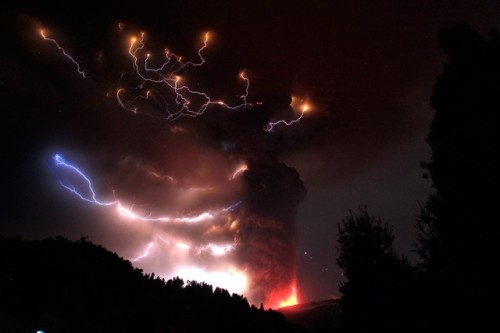

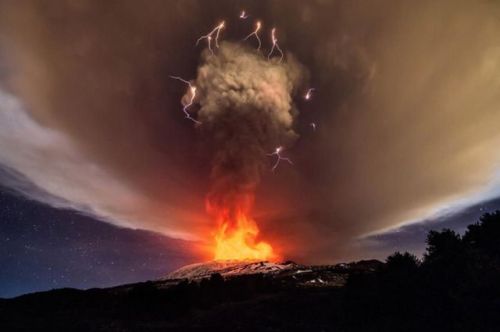
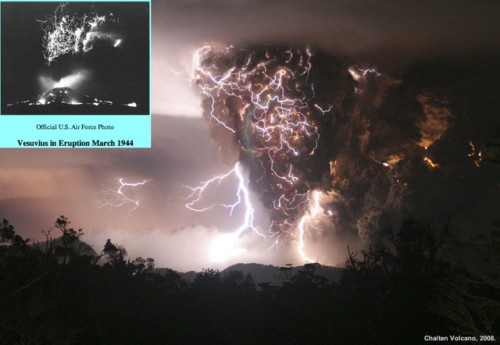

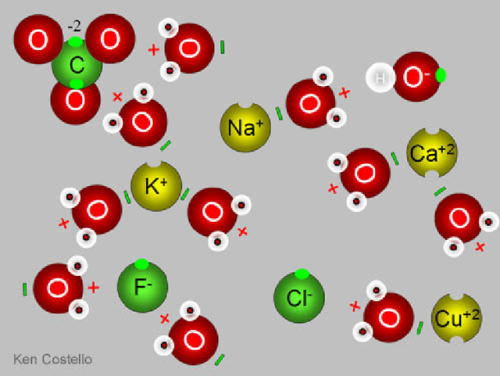

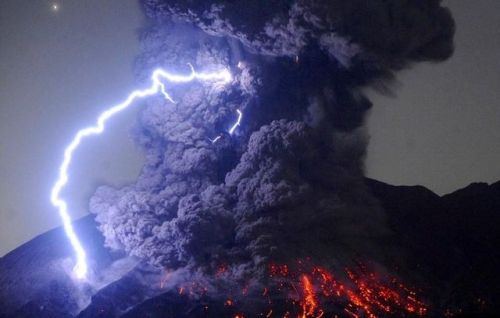
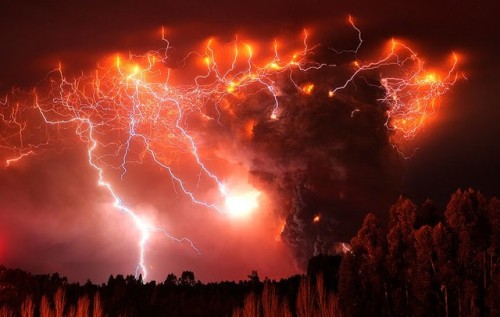
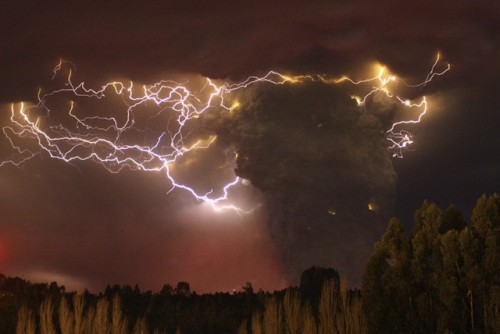
How Do Volcanoes Make Lightning?
“Volcanic lightning appears to occur most frequently around volcanoes with large ash plumes, particularly during active stages of the eruption, where flowing, molten lava creates the largest temperature gradients. The phenomena of lightning has been exquisitely recorded around a number of recent volcanic eruptions, including Iceland’s Eyjafjallajökull, Japan’s Sakurajima, Italy’s Mt. Etna, and Chile’s Puyehue, Calbuco and Chaiten volcanoes. But what you may not know is this phenomenon was not only captured during Mt. Vesuvius’ last eruption in 1944, but was accurately described nearly 2,000 years ago when it erupted all the way back in the year 79!”
Volcanoes are some of the most potentially destructive natural phenomena known to occur on our world. The most violent eruptions feature not only lava, but soot, ash, volatile gases, and even enormous chunks of rock hurled great distances. What you might not realize, however, is just how frequently these eruptions are accompanied by another spectacular show: volcanic lightning. Lightning isn’t only found in thunderstorms or other great electrical discharges between the clouds and the ground, but is produced in volcanic eruptions all throughout the world, and throughout history as well. After countless generations, where we wondered what could produce such an unusual but spectacular show, we’ve finally figured it out.
Come get the science behind how volcanoes make lightning, and enjoy some of the greatest photographs of this phenomena humanity’s ever taken!

Quantum Tunneling
Quantum tunneling refers to the quantum mechanical phenomenon where a particle tunnels through a barrier that it classically could not surmount. This plays an essential role in several physical phenomena, such as the nuclear fusion that occurs in main sequence stars like the Sun. It has important applications to modern devices such as the tunnel diode, quantum computing, and the scanning tunneling microscope. The effect was predicted in the early 20th century and its acceptance as a general physical phenomenon came mid-century.
Tunneling is often explained using the Heisenberg uncertainty principle and the wave–particle duality of matter. Pure quantum mechanical concepts are central to the phenomenon, so quantum tunneling is one of the novel implications of quantum mechanics.
source
Windswept by Charles Sowers
Though we cannot physically hold wind or see its swirling forms around us, we can definitely feel it.
In order to help visualize wind-currents, artist Charles Sowers created a kinetic installation consisting of 612 aluminum weather vanes called “Windswept” (2011). These were then meticulously placed on the side of the Randall Museum in San Francisco. Through this installation, we are able to see the patterns in the wind; where the currents go, how they turn, and sometimes how wind can abruptly change direction. This gives us a visual representation of the natural, invisible, force which moves around us, and sometimes with enough force, pushes and pulls us.
As the artist states: “Our ordinary experience of wind is as a solitary sample point of a very large invisible phenomenon. Windswept is a kind of large sensor array that samples the wind at its point of interaction with the Randall Museum building and reveals the complexity and structure of that interaction.”
This sort of installation creates a better understanding, and appreciation, of the wind. It is not just one large gust; a single wave can be made up of smaller currents, going in their own directions from the main flow. A dialogue begins to form between the building and the wind, the weather vanes acting as translators.
-Anna Paluch
-
 stickyharmonyperson liked this · 4 years ago
stickyharmonyperson liked this · 4 years ago -
 2stepvibe reblogged this · 5 years ago
2stepvibe reblogged this · 5 years ago -
 godelsimp liked this · 5 years ago
godelsimp liked this · 5 years ago -
 astronautit liked this · 5 years ago
astronautit liked this · 5 years ago -
 aurea-corde reblogged this · 5 years ago
aurea-corde reblogged this · 5 years ago -
 aurea-corde liked this · 5 years ago
aurea-corde liked this · 5 years ago -
 coco-krispies liked this · 6 years ago
coco-krispies liked this · 6 years ago -
 dean-arch liked this · 6 years ago
dean-arch liked this · 6 years ago -
 m00ndingochan reblogged this · 7 years ago
m00ndingochan reblogged this · 7 years ago -
 m00ndingochan liked this · 7 years ago
m00ndingochan liked this · 7 years ago -
 stridership liked this · 7 years ago
stridership liked this · 7 years ago -
 zulnuts liked this · 7 years ago
zulnuts liked this · 7 years ago -
 kumacurry liked this · 7 years ago
kumacurry liked this · 7 years ago -
 flex-bubble liked this · 7 years ago
flex-bubble liked this · 7 years ago -
 asstroalex reblogged this · 7 years ago
asstroalex reblogged this · 7 years ago -
 asstroalex liked this · 7 years ago
asstroalex liked this · 7 years ago -
 jaboticasworld liked this · 7 years ago
jaboticasworld liked this · 7 years ago -
 aninhaelric liked this · 7 years ago
aninhaelric liked this · 7 years ago -
 knowledgeistreasure reblogged this · 7 years ago
knowledgeistreasure reblogged this · 7 years ago -
 2343543546 liked this · 7 years ago
2343543546 liked this · 7 years ago -
 chrisofearth liked this · 7 years ago
chrisofearth liked this · 7 years ago -
 petitpoistyrannique liked this · 7 years ago
petitpoistyrannique liked this · 7 years ago -
 spacecats-yo liked this · 7 years ago
spacecats-yo liked this · 7 years ago -
 therealvagabird liked this · 7 years ago
therealvagabird liked this · 7 years ago -
 thegreekgamer liked this · 7 years ago
thegreekgamer liked this · 7 years ago -
 slightlycrackedteapot reblogged this · 7 years ago
slightlycrackedteapot reblogged this · 7 years ago -
 slightlycrackedteapot liked this · 7 years ago
slightlycrackedteapot liked this · 7 years ago -
 sisterofsilence reblogged this · 7 years ago
sisterofsilence reblogged this · 7 years ago -
 memory54-blog1 reblogged this · 7 years ago
memory54-blog1 reblogged this · 7 years ago -
 aemnb liked this · 7 years ago
aemnb liked this · 7 years ago -
 mistertotality reblogged this · 7 years ago
mistertotality reblogged this · 7 years ago -
 matthewjopdyke liked this · 7 years ago
matthewjopdyke liked this · 7 years ago -
 tofinallysleep-blog liked this · 7 years ago
tofinallysleep-blog liked this · 7 years ago -
 captainzo reblogged this · 7 years ago
captainzo reblogged this · 7 years ago -
 captainzo liked this · 7 years ago
captainzo liked this · 7 years ago -
 whatweavega-blog liked this · 7 years ago
whatweavega-blog liked this · 7 years ago -
 brightesteyes liked this · 7 years ago
brightesteyes liked this · 7 years ago -
 the-wandering-minds-blog1 liked this · 7 years ago
the-wandering-minds-blog1 liked this · 7 years ago -
 cannibal666corpse reblogged this · 7 years ago
cannibal666corpse reblogged this · 7 years ago -
 sciencenerd4-blog liked this · 7 years ago
sciencenerd4-blog liked this · 7 years ago